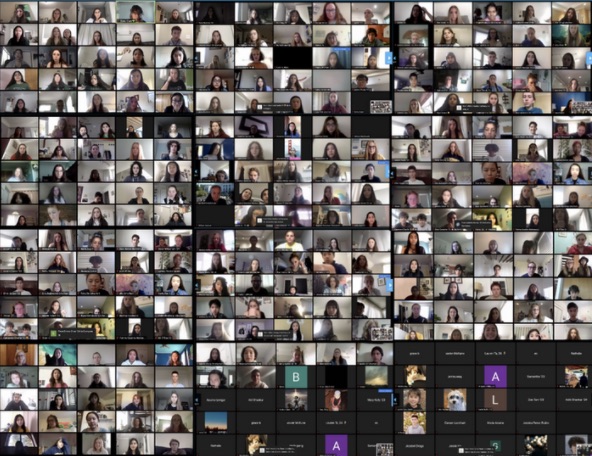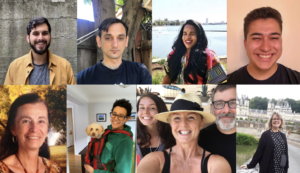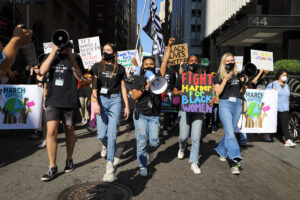The morning of Saturday, September 12 was an exciting one for many, as over 280 students across the world logged into the virtual Youth Climate Summit, kicking off a day of workshops and presentations on climate justice and activism that aimed to inspire young people to take action in their communities. The day had been in the works for months, after Lick-Wilmerding student Amelia Fortgang ’22 attended the Bronx Youth Climate Summit in May and became inspired to lead her own. Using an intricate application process and connections through other Bay Area environmental clubs, a Youth Advisory Council of 24 students was formed by the LWHS environmental club co-leaders. The council then split up into five teams for workshops, social media outreach, climate action planning, spirit and art.
To have a successful event, the council needed to find passionate presenters who would make an impact on the attendees.
“At the beginning, we brainstormed a really long five-page doc of all the people we wanted to speak, and all the people we thought were really awesome in the environmental movement. Then from that we narrowed it down to people that we thought were both realistic and interesting,” Fortgang said. The presenters were a range of climate activists taking action in their communities, including Sarah Goody, the founder of Climate Now. Goody aims to “empower youth in Marin County to discuss the climate crisis and take community action,” according to Climate Now’s website.
“I would say the presenters were knowledgeable, prepared, and organized,” stated Tabitha Paik ’24, who attended the summit.
Fortgang said that the reason for the summit was because “too often, climate conversations are really centered around the problem, and they don’t present the problem with solutions. So from the start, we wanted to be solution-oriented.”
Problem-solving turned out to be a large part of the summit, with presenters and attendees offering solutions to issues that included planting trees, making personal changes such as eating less meat and schoolwide groups coming together to form climate action plans for their respective high schools.
“The students came to learn more about specific issues they may not have known about and take what they learned to implement action,” said Erika Tam ’22, one of the original summit organizers.
On September 9, just days before the summit, people across the Bay Area woke up to an eerie atmosphere of bright orange skies. To Tam, this day highlighted the urgency of climate change.
The effects of a changing climate aren’t always visible in urban settings, Tam said, adding that experiencing a day of orange skies first hand made climate change feel like even more of a personal issue.
The summit started out with an opening session, during which the organizers introduced themselves and prepared attendees for the upcoming events. There was an immediate sense of community derived from the idea that everyone was there for the same reason. Soon after was workshop number one, a short period of time with specialized presentations to choose from based on attendees’ interests. Options included digital online activism and a youth environmental entrepreneurs panel.
Lunch break was an opportunity to discuss issues in groups or relax and take a rest before the next session.
After lunch was workshop two, where participants started the process of climate action planning by splitting into their respective schools and brainstorming ideas to improve their communities environmentally.
Finally was the closing session. There was a feeling of pride and a new perspective on what young people could do to make an impact as students shared their climate action plans with the group.
“Our goal in this is really to have people go to their schools and make change,” Fortgang said. That goal was definitely achieved—a post-summit survey found that 73% of attendees planned to continue working on their plan to take action in the climate crisis.
The summit made a significant impact on the organizers, as well. “We’re definitely going to do it next year; we’re not sure if it will be in person or virtual,” Fortgang said, after seeing how successful the summit was.
Speaking to aspiring activists, Fortgang offered a piece of advice: “Just get involved. There are people that will want to hear your voice, so you just have to find a place to share it. Part of the mission of the summit was to show that there are a lot of youth environmental organizations right here in the Bay Area, and they’re all working towards the same goal. We really wanted to unite them together and bring them all to one centralized place so people could learn from them and take action themselves.”






